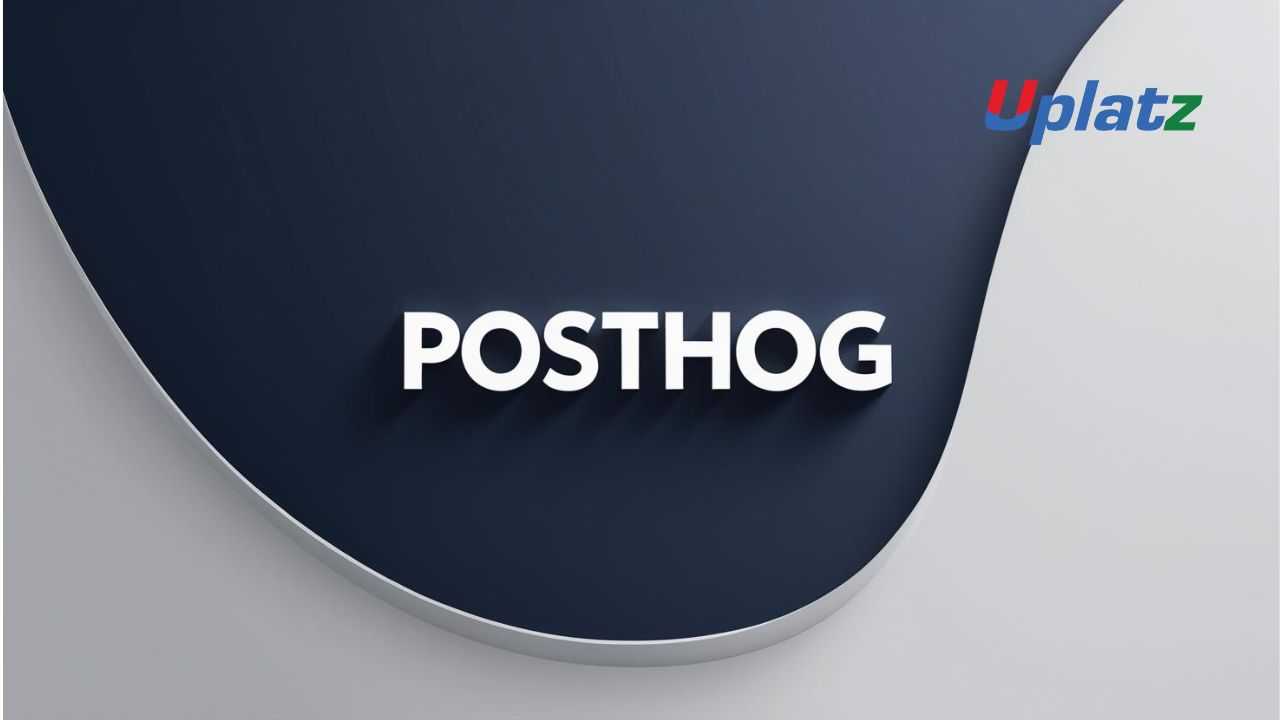PostHog
Learn product analytics and session recording with PostHog to track user behavior, run experiments, and build data-driven products. Price Match Guarantee
Full Lifetime Access
Access on any Device
Technical Support
Secure Checkout
Course Completion Certificate
Price Match Guarantee
Full Lifetime Access
Access on any Device
Technical Support
Secure Checkout
Course Completion Certificate
 96% Started a new career
BUY THIS COURSE (GBP 29)
96% Started a new career
BUY THIS COURSE (GBP 29)
-
 86% Got a pay increase and promotion
86% Got a pay increase and promotion
Students also bought -
-

- Business Intelligence and Data Analytics
- 50 Hours
- GBP 29
- 816 Learners
-

- Google Analytics
- 20 Hours
- GBP 29
- 372 Learners
-

- Web Analytics
- 3 Hours
- GBP 29
- 86 Learners

PostHog: Open-Source Product Analytics is a comprehensive, hands-on course designed for developers, data analysts, product managers, and growth professionals who want to take full control of their product analytics stack. In an era where data privacy, customization, and agility matter more than ever, PostHog stands out as the leading open-source analytics platform that gives teams ownership of their data and freedom from vendor lock-in.
This course takes you on a practical learning journey—from setting up PostHog and tracking user events to analyzing behavior, running experiments, and implementing feature rollouts—all within a secure, self-hosted environment. Whether you’re optimizing a SaaS product, building a mobile app, or improving website engagement, this course provides the technical and strategic foundation you need to harness data effectively and ethically.
What is PostHog?
PostHog is an open-source product analytics platform built to help teams understand user behavior, improve retention, and accelerate product growth—all while maintaining full control of their data. It offers a complete suite of tools including event tracking, funnel analysis, session recording, feature flags, cohort segmentation, A/B testing, and experimentation—all within one integrated environment.
Unlike traditional analytics solutions such as Google Analytics or Mixpanel, which rely on third-party servers, PostHog can be self-hosted on your own infrastructure or cloud environment. This means your team owns your analytics data, ensuring data privacy, compliance, and flexibility to customize every part of your analytics workflow.
This course demystifies the platform step-by-step, starting from installation and configuration, through data collection, to building actionable dashboards and reports. You’ll learn not just how to use PostHog, but how to integrate it into a modern data ecosystem for scalable, privacy-friendly analytics.
How Does PostHog Work?
PostHog works by tracking events—user interactions such as clicks, logins, purchases, and page views—across your product. It stores and processes these events in real time, allowing teams to build dashboards, analyze funnels, and understand user behavior patterns.
Here’s how PostHog’s main components come together:
-
Event Tracking and Collection – Learn to instrument your application or website using PostHog’s SDKs and APIs to capture detailed event data without compromising performance.
-
Dashboards and Visualizations – Build interactive dashboards that present KPIs, funnels, and retention reports for quick insight into what’s working and what’s not.
-
Funnels and Retention Analysis – Identify where users drop off in their journey, measure retention over time, and find opportunities to improve conversion and engagement.
-
Session Recordings – Replay real user sessions to see exactly how users interact with your product, helping you detect friction points and improve UX.
-
Feature Flags – Roll out new features to specific user segments safely using controlled feature toggles.
-
A/B Testing and Experiments – Conduct experiments to validate hypotheses, test product changes, and optimize user experiences with measurable impact.
Throughout this course, you’ll apply these concepts in practical exercises, learning how PostHog captures, analyzes, and visualizes data to inform smarter product decisions.
How is PostHog Used in the Industry?
PostHog is rapidly becoming a popular choice for startups, tech companies, and data-driven enterprises seeking transparency and autonomy in their analytics. Organizations use PostHog for:
-
Product Optimization: SaaS companies use PostHog to understand user engagement, improve onboarding, and reduce churn.
-
Behavioral Analytics: Teams track how users interact with new features, pages, or workflows to make iterative design improvements.
-
Experimentation: Growth teams run A/B tests to measure how new features or UI changes affect conversion and retention.
-
Privacy-First Analytics: Companies in regulated sectors like fintech and healthcare choose PostHog for its compliance with GDPR and SOC-2 standards.
-
Feature Management: Developers manage controlled rollouts and feature experiments without relying on external services.
By studying real-world applications in this course, you’ll see how PostHog is transforming product analytics—from agile startups using it to build MVPs, to large enterprises leveraging it for complex behavioral insights.
Benefits of Learning PostHog
Learning PostHog empowers you to manage your analytics in-house and use data as a strategic advantage. Here’s why mastering PostHog matters for your professional growth:
-
Full Data Ownership: Unlike traditional SaaS analytics tools, PostHog lets you host your own data, ensuring compliance with security policies and regional privacy laws.
-
Customization and Flexibility: Modify and extend PostHog to fit your organization’s exact needs—no restrictions on data access or integrations.
-
Unified Analytics Ecosystem: Access multiple features—tracking, feedback, experimentation, and feature flags—under one open-source platform.
-
Cost Efficiency: Avoid expensive analytics subscriptions by hosting your own scalable analytics solution.
-
Technical Empowerment: Learn to set up and manage event pipelines, custom dashboards, and integrations without relying on third-party vendors.
-
Career Relevance: As open-source tools become mainstream in analytics, PostHog skills are highly valued among data professionals and developers.
By mastering PostHog, you’ll gain an edge in designing privacy-first, data-informed digital experiences.
Benefits to Organizations
For businesses, implementing PostHog means better control over analytics infrastructure, improved team collaboration, and faster experimentation cycles. Product, marketing, and engineering teams can work from a single source of truth—seeing what users are doing, understanding why they’re doing it, and taking immediate action.
Moreover, because PostHog integrates seamlessly with tools like Snowflake, BigQuery, Slack, and Zapier, it fits naturally into modern data stacks—making it an essential part of any digital organization’s toolkit.
What You’ll Learn
By completing this course, you’ll gain the practical skills to install, configure, and apply PostHog for data-driven decision-making. Through guided lessons and hands-on projects, you will learn to:
-
Set up PostHog for tracking user events and analytics.
-
Collect and visualize data across funnels, cohorts, and retention metrics.
-
Run A/B tests and experiments to validate product changes.
-
Use session recordings to understand user behavior and identify usability issues.
-
Implement feature flags to roll out features safely and monitor adoption.
-
Integrate PostHog with external tools like Google Analytics, CRMs, and data warehouses.
-
Analyze data trends to inform product roadmaps and business strategies.
You’ll work on real-world projects that replicate how analytics and experimentation drive continuous product improvement in leading organizations.
Who This Course Is For
This course is designed for a wide range of professionals across data, product, and technology fields:
-
Product Managers: Make informed product decisions using real-time analytics and experiment data.
-
Developers: Learn how to instrument open-source analytics and integrate PostHog into applications.
-
Data Analysts: Gain deep insights into user behavior, retention, and engagement metrics.
-
Growth Marketers: Test campaigns, measure conversions, and optimize acquisition channels.
-
Startups and Tech Teams: Build scalable, privacy-friendly analytics systems without depending on external vendors.
No prior experience with analytics platforms is required—the course starts from fundamentals and gradually moves toward advanced topics.
Why This Course Matters
In today’s data-centric world, companies cannot afford to make blind decisions. PostHog bridges the gap between technical control and strategic insight, enabling you to measure, test, and optimize every part of your product lifecycle.
This course gives you the confidence to deploy and manage an analytics system that aligns with your company’s growth goals—while maintaining transparency, compliance, and cost efficiency. By learning PostHog, you position yourself at the forefront of the open-source analytics movement, ready to lead with data-driven intelligence and innovation.
By the end of this course, you will be able to:
-
Install and configure PostHog (cloud or self-hosted)
-
Track custom events and user properties
-
Build funnels to understand drop-offs and conversions
-
Analyze cohorts and retention curves
-
Run A/B tests and manage feature flags
-
Record and analyze user sessions for usability insights
Course Syllabus
Module 1: Introduction to PostHog
Module 2: Installation & Setup (Cloud vs Self-Hosted)
Module 3: Event Tracking & User Properties
Module 4: Funnels & Conversion Analysis
Module 5: Retention & Cohort Analysis
Module 6: Session Recording & Heatmaps
Module 7: Feature Flags & Experimentation
Module 8: Real-World Projects (SaaS Funnel, E-commerce Analytics)
Module 9: Dashboards & Reporting
Module 10: Interview Questions & Answers
Upon completion, learners will receive a Certificate of Completion from Uplatz validating their expertise in open-source product analytics and experimentation with PostHog.
This course prepares learners for roles such as:
-
Product Analyst
-
Growth Engineer
-
Data Analyst
-
Product Manager
-
Business Intelligence Specialist
-
What is PostHog and how does it differ from Mixpanel or Amplitude?
Answer: PostHog is open-source and self-hostable, giving teams full control of data, unlike Mixpanel and Amplitude which are cloud-hosted. -
What are the main features of PostHog?
Answer: Event tracking, funnels, retention analysis, session recording, feature flags, and A/B testing. -
How does session recording help in PostHog?
Answer: It records user interactions (clicks, scrolls, navigation), providing qualitative insights into usability issues. -
What are feature flags in PostHog?
Answer: They allow teams to enable or disable features for specific users, enabling safe rollouts and testing. -
How can PostHog be deployed?
Answer: PostHog can be used in the cloud (hosted by PostHog) or self-hosted using Docker/Kubernetes for full control. -
What is cohort analysis in PostHog?
Answer: It groups users based on shared attributes or behavior to study retention and engagement patterns. -
How does PostHog support experimentation?
Answer: It provides A/B testing frameworks and feature flagging to test different versions of a feature. -
What are the advantages of using open-source analytics like PostHog?
Answer: Data ownership, privacy compliance, flexibility, and cost savings. -
What challenges might you face with PostHog?
Answer: Setup complexity in self-hosting, maintaining infrastructure, and ensuring proper event tracking. -
How would you use PostHog in a SaaS product?
Answer: To track onboarding funnels, measure feature adoption, run experiments, and analyze churn.









